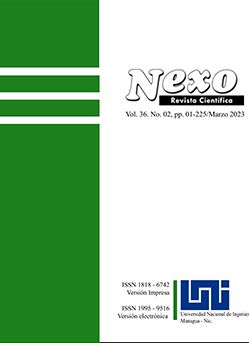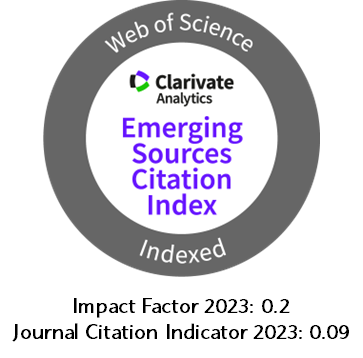Bioleaching of Iron and Zinc from a galvanized steel waste from automotive industry using Acidithiobacillus thiooxidans: a case of study of the bajío area in México
DOI:
https://doi.org/10.5377/nexo.v36i02.15994Keywords:
Bioleaching, Acidithiobacillus thiooxidans, Zinc, Iron, waste valorizationAbstract
Biohydrometallurgy has been defined as a collection of techniques that involve the use of microbial metabolisms, such as the bacterium Acidithiobacillus thiooxidans, for the extraction of metals. Therefore, in the current study, we tested the potential of a pure culture of A. Thiooxidans in the removal of zinc and iron from galvanized waste of the automotive industry. Starkey medium was employed and was added 0.5% w/v of solid sample, and incubation took place at 30°C, and 180 rpm for 7 days. The experiment showed a biological removal of 100% of Fe and Zn after 72 hours, as shown with the measurements taken using inductively coupled plasma spectrophotometer (ICP-OES). Additionally, an increase of the concentration of sulphates is reported alongside the process. The present study thus suggests that a fast, efficient, and low energy biological process for the recovery of these metals coming from galvanized steel waste is possible.
Downloads
273
Downloads
Published
How to Cite
Issue
Section
License
Copyright (c) 2023 Universidad Nacional de Ingeniería

This work is licensed under a Creative Commons Attribution 4.0 International License.
The authors who publish in Nexo Scientific Journal agree to the following terms:
- Authors retain the copyright and grant the journal the right of the first publication under the license Creative Commons Attribution License, which allows others to share the work with a recognition of the authorship of the work and the initial publication in Nexo Scientific Journal.
- Authors may separately establish additional agreements for the non-exclusive distribution of the version of the work published in the journal (for example, in an institutional repository or a book), with the recognition of the initial publication in Nexo Scientific Journal.
- Authors are allowed and encouraged to disseminate their works electronically (for example, in institutional repositories or in their own website) before and during the submission process, as it can lead to productive exchanges, as well as earlier and greater citation of published works.











